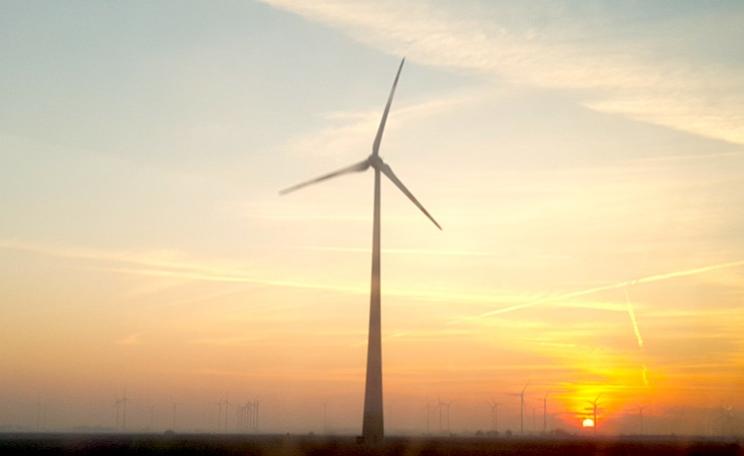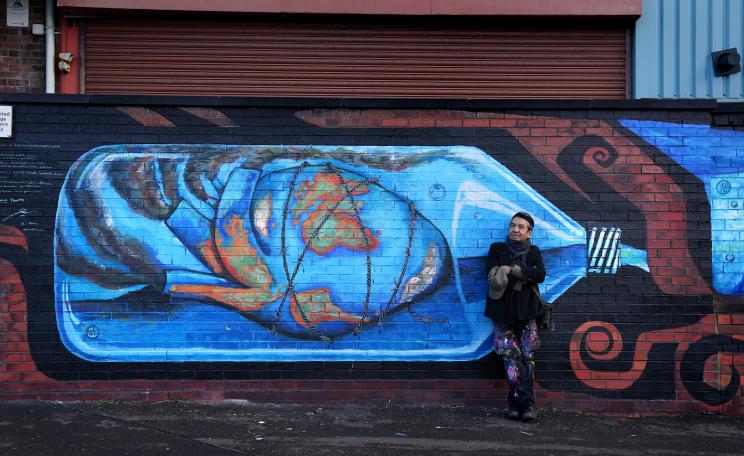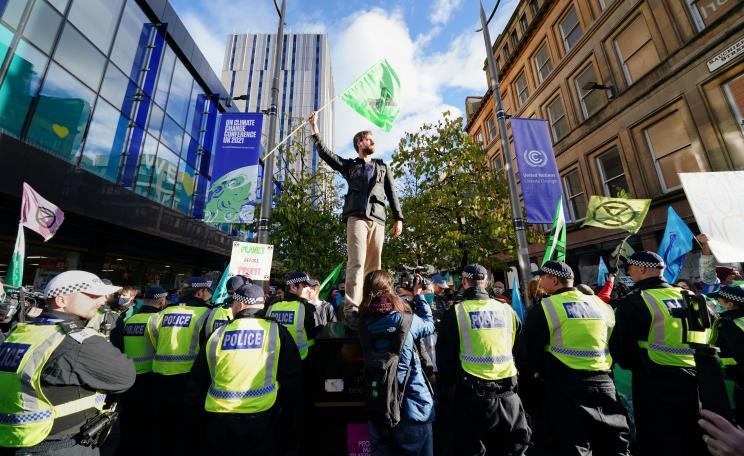COP26 is set to be the biggest climate conference yet, slated as the largest gathering of world leaders ever to be hosted by the UK.
Most people will by now have heard how Glasgow will be hosting an international Climate Conference next November: COP26. Some may even be aware of its importance as a last chance to get things right.
But, wait. How did this come to be? And what happened at the 25 previous COPs? Come to think of it, what does COP actually stand for?
COP, or the Conference of the Parties, traces its origins to the United Nation’s first major Conference on the Environment and Development. The parties are the national and intranational governments of the world.
Commitments
Emerging from the Cold War, 1992 saw a world seemingly poised to start a new era in global development and cooperation, in which the environment as an international concern began to take root, or so it was thought.
The Rio Earth Summit, as it has come to be known, established the United Nations Framework Convention on Climate Change (UNFCC), with the mission to raise global public awareness on related issues.
Among its core objectives was to stabilise the concentration of greenhouse gases (GHG) in the Earth’s atmosphere in order to prevent risks to the climate system, a concern touted by scientists since at least the 1970s.
The COP was created as the convention’s supreme body and as an association of all member states, with the intention of having regular annual meetings to be attended by heads of state, ministers, environmental experts and non-governmental organisations (NGOs).
The first COP was held in 1995, hosted in the capital of a recently reunited Germany. Here, the Berlin Mandate was established, collecting a series of indefinite commitments and initiatives which countries could pick and choose from according to their needs and capabilities.
Rights
COP2, in Geneva (Switzerland), laid down “binding quantitative targets” limiting GHG emissions by industrialised countries and indicating precise reductions (agreed by consensus) to be revisited the following year in Kyoto, Japan.
At Kyoto, in 1997, binding targets were set for GHG for 37 countries, establishing what would come to be known as the Kyoto Protocol, which would enter into force in 2008, with an expiration date of 2012.
COP26 is set to be the biggest climate conference yet, slated as the largest gathering of world leaders ever to be hosted by the UK.
By then, developed countries had to reduce emissions by five percent in comparison to 1990. However, two of the largest emitters, China and the United States, refused to ratify the agreement, largely condemning it to failure. What followed between 1998 and 2006 were nine conferences of little consequence, as the parties “finalised” the details of the Kyoto protocol in the run-up to 2008, resulting in a loss of nine years in a race against time.
In 2007, COP13 gathered in Bali (Indonesia) where significant steps were taken to replace the failed protocol, without actually activating a new treaty. In light of increased evidence global warming was a matter of fact, the Bali Action Plan set down a two-year roadmap towards a binding agreement to be reached at COP15 in Copenhagen, Denmark.
In Bali the global coalition of networks and organisations Climate Justice Now! (CJN) was established, mobilising people across the world to rally around affirming “the rights of communities dependent on natural resources for their livelihood and cultures to own and manage the same in a sustainable manner… opposed to the commodification of nature and its resources” (Bali Principles of Climate Justice, article 18, August 29, 2002).
Economies
COP14, in the polish city of Poznan, was reserved for refining details ahead of Copenhaguen, and introduced a programme of transfer of rational ecological technologies to developing countries. The world was on track, it seemed, to finally do something to tackle what was increasingly becoming an obvious reality, at least to scientists.
The Danish COP was received with great hope, at its core the goal of reaching “the conclusion of a legally binding climate agreement, valid for the whole world, which will be implemented as of 2012”. In real terms, this meant a reduction of carbon emissions by 50% by 2050 in comparison to 1990.
However, meeting in Thailand three weeks prior, China and the US pacted that any agreement reached would not be binding, and so anything achieved at COP15 would essentially be stillborn. The summit was hence bitterly described as a failure and disaster by environmental organisations and governments alike.
Picking up the pieces, Cancun’s (Mexico) COP16 established the Green Climate Fund, an operating entity to aid developing countries in adaptation and mitigation practices to counter climate change. In 2011, the South African city of Durban hosted COP17 where eyes were set on reviving Kyoto by 2013.
The European Union backed this initiative but only as part of "a global and comprehensive framework engaging all major economies," including the United States and China. Canada, Japan, and Russia opted for seeking a whole new agreement, largely rendering any resuscitation efforts as futile.
Scientists
In 2012, in Doha (Qatar) after 13 days of negotiations during COP18, parties were able to agree on a series of decisions to move the process forward and save the Kyoto Protocol, at least in principle. Ultimately, the sentiment was largely one of dissatisfaction with the feeble ambition displayed by the final agreement, especially in light of science and the fact emissions in 2012 were already double those of 1990.
In 2013, COP19 Warsaw’s initial goal was to agree on a reduction of emissions by 2015, but it was faced by fierce opposition, not least from the host country, Poland, still to this day in possession of a robust coal-based industry. This stood in stark contrast to the presentation of a report by the UN which assured with near certainty how global heating was a result of man-made activity since the 1950s.
Bitter with the lack of seriousness displayed by some more developed countries, namely Australia, China and 132 developing nations walked out of the conference.
This was followed by a mass walk-out by WWF, Oxfam, ActionAid, the International Trade Union Confederation, Friends of the Earth and Greenpeace on the very last day of negotiations, who stated “organisations and movements representing people from every corner of the Earth have decided that the best use of our time is to voluntarily withdraw from the Warsaw climate talks. The Warsaw climate conference, which should have been an important step in the just transition to a sustainable future, is on track to deliver virtually nothing.”
At COP20, held in Lima (Peru) in 2014, the most significant announcement came from the United States and China who, for the first time ever, committed to reduce GHG emissions, crucial if the warming limit set by scientists was to be even remotely achieved.
Disappointing
The final agreement set the path to what was to become the most significant of all the conferences, 2015’s COP21, where the Paris Agreement was signed, an ambitious global convention which seemed to finally take climate change seriously.
Adopted by 197 countries and officially launched on Earth Day (April 22) 2016, it’s principal goal is to “limit global warming to well below 2, preferably to 1.5 degrees Celsius, compared to pre-industrial levels,” by reaching a global peaking of GHG emissions “as soon as possible to achieve a climate neutral world by mid-century.”
The following 4 COPs held in Marrakech (Morocco), Bonn (Germany), Katowice (Poland), were largely viewed as “technical meetings” in the run-up to the implementation of the Paris Agreement, with COP23 in Bonn seeing a much diluted US delegation, now that the Trump administration and its climate denialism was at the helm of the United States government. As one of his first acts as president, the Republican leader announced his country’s departure from the Paris Agreement.
Back to Poland, and COP24 was mired in tension following the IPCC’s now infamous report on what a 1.5 degree warmer world would look like, setting the stage for a young girl from Sweden to speak-out and challenge the adults in the room. This girl was Greta Thunberg, a teenager who refused to go to school while the leaders of her country, and the world, did nothing to save her and her generation’s future.
The last COP to be slated, number 25, was to be held in Santiago, Chile, but due to social unrest was moved at the last minute to Madrid, Spain. Its results were largely considered disappointing in light of the urgency of the situation and the need for real, concrete action.
Propagandist
While climate activists dumped a pile of horse manure outside the conference venue, the director of strategy and policy for the Union of Concerned Scientists, Alden Meyer, who had attended negotiations since 1991, was struck by the near total disconnect between what science demanded and what was delivered in the form of meaningful action.
The proverbial can was once again kicked down that old road. The onslaught of the Covid-19 meant COP26, in Glasgow, was postponed by a year to November of 2021.
COP26 is set to be the biggest climate conference yet, slated as the largest gathering of world leaders ever to be hosted by the UK. Its significance lies in it being the first to review and strengthen the commitments of the Paris Agreement.
It will be defined by how many inroads it makes to strike a balance between plans to rebuild post-pandemic economies and implement measures to limit global heating by the end of the century.
Whatever happens, it is set to play a definitive role as to whether “building back better” remains merely a propagandist slogan hijacked by short-term economic national interests or, a reality on a withering planet.
This Author
Nicolás Eliades has been working in international, political and organisational communications, including journalism, for well over 20 years, spanning four continents. He was born in Nairobi, Kenya and brought up in a Colombian and Cypriot-South African household. Multiculturalism is his way of life. Past employers include US Department of State, EU’s European Commission, renown Colombian daily El Espectador, Africa’s biggest broadcaster, SABC, and George Soros’ Open Society Foundations.







